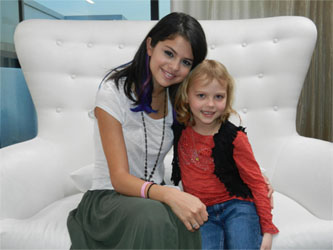
8 Tips on How to Talk to Kids about Disasters
As news coverage continues of tornado devastation across the American South, children will likely see disturbing news footage and have questions about this tragedy. Below are several suggestions on how to talk with children about this disaster and its impact. These tips are provided by child-focused humanitarian organization World Vision.
World Vision responds to natural disasters in the United States and around the world, and is providing urgently needed personal hygiene kits, school supplies for children, and cleaning supplies for recovery efforts in Alabama, Missouri, Minnesota, Virginia, and North Carolina.
Talking to children about tragedy is a job most parents would love to avoid. If only our children did not need to hear about things like this past week’s devastating tornadoes in Joplin, Missouri, and now, Oklahoma and Kansas.
[ Also Read: PepsiCo’s $500,000 for Tornado Relief Efforts ]But of course, they do hear. And they are full of questions: Could this happen to me? What’s going to happen to the children? Can I do anything to help the children I see on TV?
World Vision, a humanitarian relief organization with relief teams on the ground in the hard-hit communities and in numerous other relief responses each year, suggests eight ways to make a tough job a little bit easier.
1. Start by listening.
Find out what your child already knows. You can then respond in an age-appropriate way. The aim is not to worry them with the devastating details, but to protect them from misinformation they may have heard from friends or disturbing images they may have seen on television. Limit your answer to the question asked and use simple language.
2. If you don’t know the answers to their questions, admit it
If your children ask questions that you can’t answer, tell them so, and then do some research to try and help them sort it out. If they ask “Why did this have to happen?” don’t be afraid to say “I don’t know.” If you are part of a faith community, the reassurance offered there can be invaluable in helping your child sort through the truth that awful things happen.
3. Tell the truth about any relatives who have been affected
If your family has relatives or friends in the tornado-affected areas, it may be doubly terrifying for your child. If your family members are safe, make sure to communicate this as soon as possible. If they are affected or have been harmed, explain in simple language what has happened and alleviate any fears that the same thing may happen to your child.
4. Follow media reports or online updates privately.
Young children in particular are very impressionable, and seeing or hearing about the horrifying details of the tornadoes may be more than they can cope with. Adults, too, should ensure they are dealing with their own emotions by talking to others, so they can continue to respond well to their children’s needs.
5. Concentrate on making them feel safe.
When tragedies occur, children wonder if the same event could happen in their hometown. If tornadoes are unlikely to occur in your geographic area, tell children that. Placing themselves in the situations of victims is not all bad—it is a sign of empathy, an essential life skill, but watch for signs of excessive worrying.
6. Give children creative outlets.
Some children may not be prepared to speak about what they have heard, but may find drawing or other creative activities helpful to deal with their emotions and stress. Their drawings can be helpful starting points for conversation.
7. Model involvement and compassion.
Tell your child that as a family, you will be helping the people in tornado-affected communities by giving a donation to a reputable charity responding to the tragedy.
8. Give your child a chance to be involved.
Being involved in the solution will help relieve some of their anxiety. Invite them to contribute to the family’s gift by giving something out of their piggy bank, or writing a letter to affected children which you can submit to the local paper on their behalf.
Photo courtesy: World Vision













